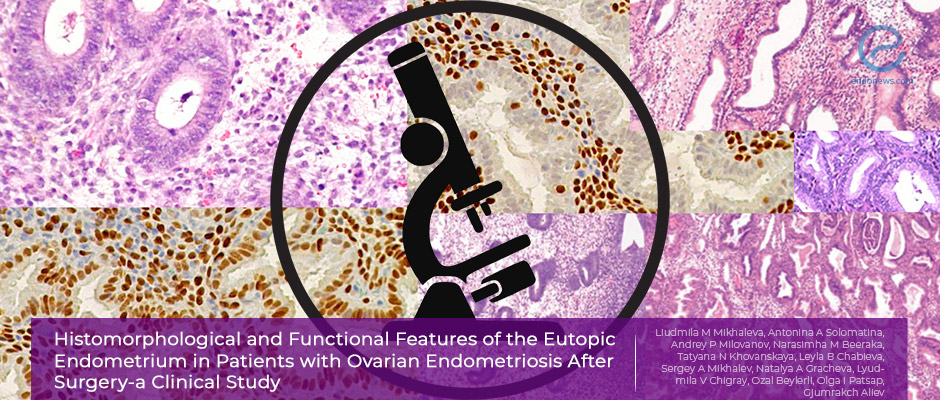Endometrial receptivity after the removal of ovarian endometriotic cysts
Mar 29, 2021
Eutopic endometrial biopsies reveal valuable findings with possible implications on infertility of endometriosis patients
Key Points
Highlights:
- Endometriosis-associated infertility after surgical intervention of endometriotic ovarian cyst could be due to the abnormal estrogen receptor (ER) and progesterone receptor (PR) expression, as well as the delayed secretory transformation and impaired "pinopodia" formation even after surgery.
- There is a need for further scientific elucidation of endometriosis-related patho-morphology.
Importance:
- Infertility is an important aspect of endometriosis which is mainly due to subtle changes in endometrial capacity for the implantation of the zygote.
- The protrusions called "pinopodia" on eutopic endometrium and hormone receptor expression may have important implications on infertility due to endometriosis.
- It is not known whether the removal of endometriotic ovarian cysts will change the ER, PR, and "pinopoida", hence the receptivity in the eutopic endometria.
What's done here:
- This study involved 172 reproductive-age patients, with surgically removed endometriotic ovarian cysts.
- Eutopic endometrium biopsies from each of these patients following ovarian cystectomy, 6 and 12 months after surgery during proliferative and secretory phases.
- Along with a standard histopathological examination, morphometric analysis of the surface endometrium for "pinopodia" was done.
- Immunohistochemical assessment of estrogen, progesterone receptors also performed.
Key Results:
- Secretory changes were delayed along with a significant increase in estrogen receptor and progesterone receptor expressions in the epithelia during the mid-proliferative phase.
- This increase was also observed in the stroma and glands during the mid-secretory phase.
- A statistically significant decrease in the number of "pinopodia" was observed on the apical surface of eutopic endometrial epithelia.
Lay Summary
Mikhaleva and associates from the "Russian Research Institute of Human Morphology" published their results in “Reproductive Sciences” yielding their novel morphological findings of eutopic endometria in patients following surgical excision of endometriotic ovarian cysts.
Current therapeutic measures are targeting to relieve symptoms related to endometriosis as a fundamental goal. There is a need for further scientific elucidation of endometriosis-related patho-morphology.
Infertility is an important aspect of endometriosis that seems to be mainly due to subtle changes in endometrial capacity for the implantation of the zygote. Experimental studies show that eutopic endometria may play a role in endometriosis-related infertility. It is an intriguing observation that infertility related to the endometriotic environment could have important implications in regard to the protrusions "pinopodia", located on apical tips of eutopic endometrial epithelia.
In this clinical study with 172 patients between ages 26-40, who had surgical removal of their endometriotic ovarian cysts. Following surgery at 6 and 12 months aspiration biopsies of eutopic endometrium were done during proliferative and secretory phases. Along with the routine evaluation of these endometrial biopsies, microscopic morphometric analysis of "pinopodia", and the assessment of estrogen and progesterone receptors were performed.
There was a delay in secretory changes along with a significant increase in estrogen and progesterone receptor expressions in the stroma and glands during the mid-proliferative phase. There was a statistically significant decrease in the number of the "pinopodia" on the apical surface epithelium at 6 and 12 months following surgery.
The estrogen receptor and progesterone receptor expression is a crucial condition for opening the implantation window. Thus, changes in these hormone receptors and lack of progesterone could result in both morphological and functional changes in the eutopic endometrium.
These observations suggest that even after a year following surgical intervention in treating endometriotic ovarian cysts, there may well be a risk for implantation failure across the eutopic endometria.
Research Source: https://pubmed.ncbi.nlm.nih.gov/33650096/
endometrioma surgery endometriosis infertility pinopodia biopsy pathology ER PR receptivity

